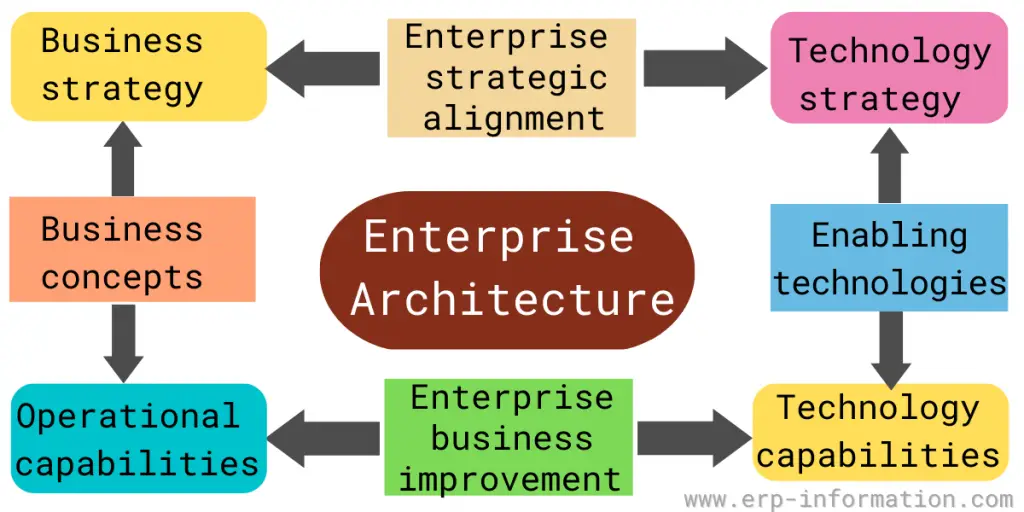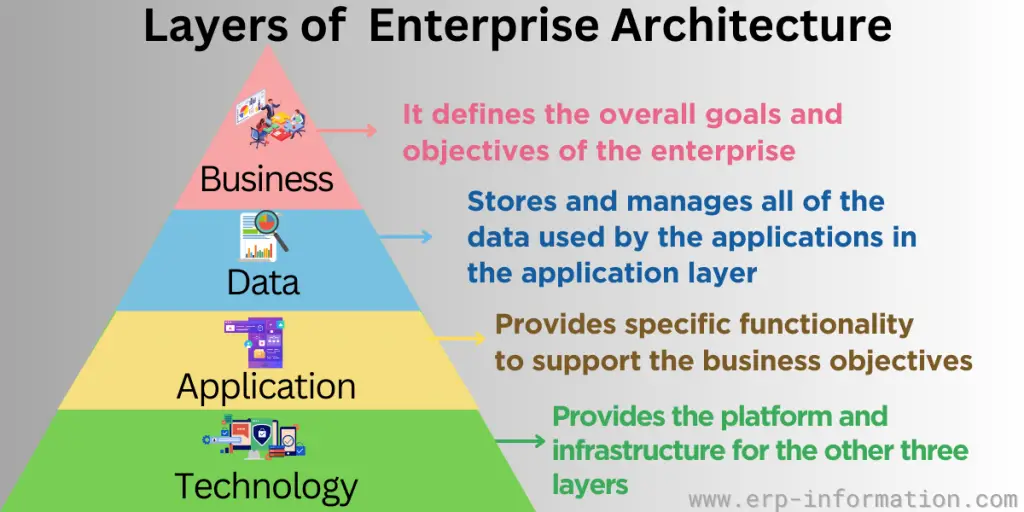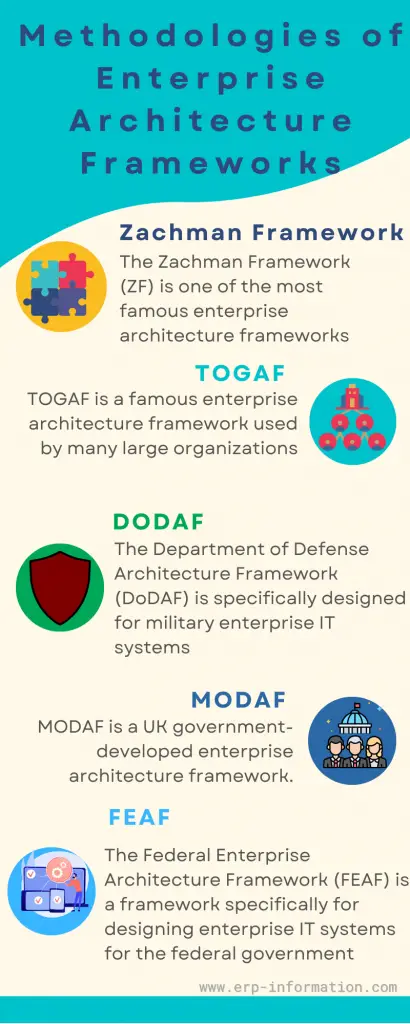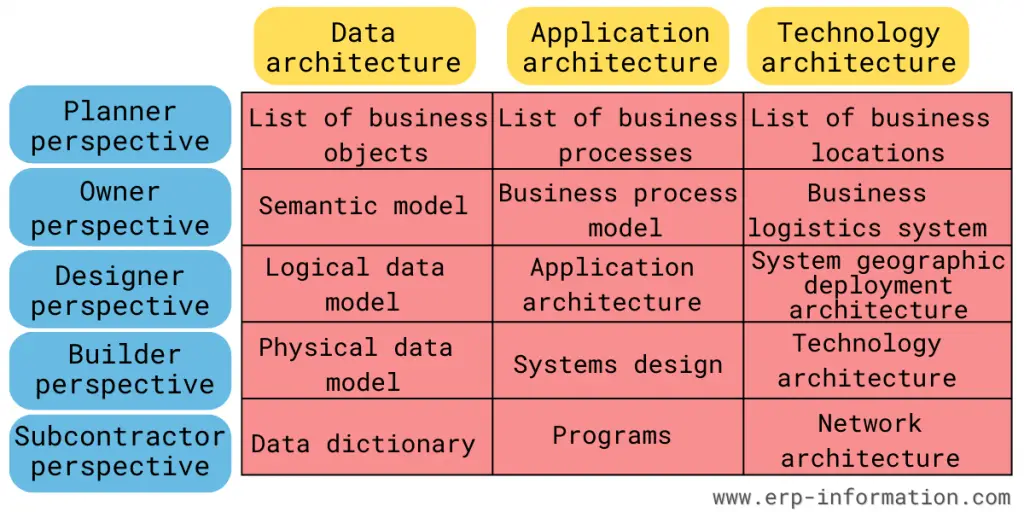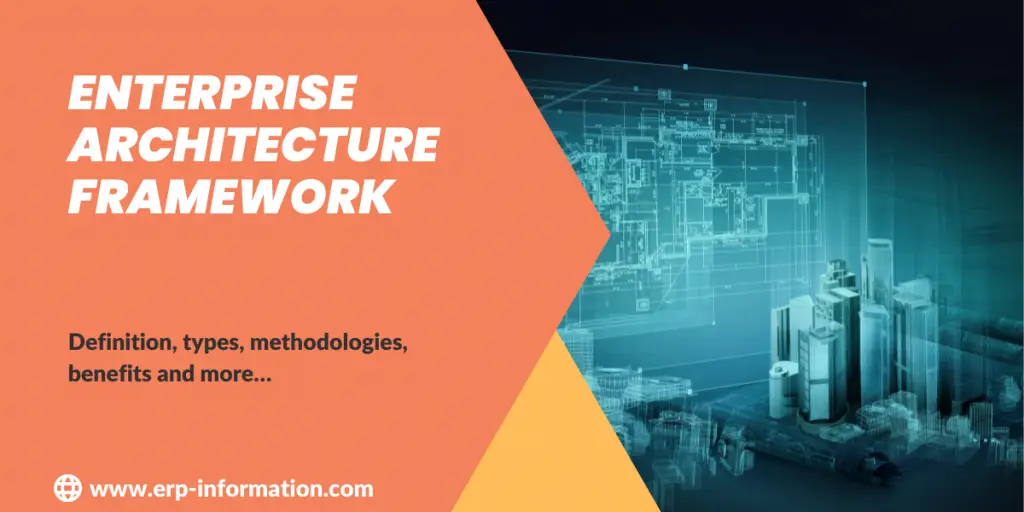
Are you looking to craft or enhance your enterprise architecture? Then understanding enterprise architecture frameworks is key. It serves as the blueprint guiding an organization’s structure.
So the enterprise needs to be aligning its technology, processes, and strategies for optimal performance and growth. Enterprise architecture framework is a master plan that harmonizes business goals with technological capabilities.
Read on to explore the foundation of these frameworks, essential for creating a robust business structure.
This blog will explore the enterprise architecture framework, its domains, types, and benefits. It will also provide its methodologies and how to use them to improve your business.
What is an Enterprise Architecture Framework?
An enterprise architecture framework is a set of guidelines and rules that help you design, plan, and manage your enterprise IT systems. There are many different enterprise architecture frameworks, but they all share standard features and benefits.
The below image shows the holistic view of an enterprise architecture framework.
Enterprise Architecture Domains
Four main domains are
- Business Architecture
- Data or information Architecture
- Application Architecture
- Technology Architecture
1. Business Architecture
In an Enterprise Architecture framework, Business Architecture stands as the highest layer, outlining the enterprise’s overarching goals. For instance, a retail company aiming to boost its market share by 15% within the next year sets the stage. The enterprise architect delves into the current market share’s contributing factors before identifying necessary alterations.
By analyzing these elements, the enterprise architect can pinpoint the required changes to drive market expansion. This domain not only defines current business capabilities but also delineates the responsibilities of each department within the organization.
2. Application Architecture
The application layer builds upon the business layer and provides specific functionality to support the business objectives.
In modern enterprises, multiple applications span various departments such as project management, product tracking, customer relations, and supplier interactions. Enterprise architects in this domain strategize the deployment and integration of these diverse applications.
When managers or employees propose additional applications, the enterprise architect steps in, evaluating the tool’s advantages, documenting its intended use, and assessing its compatibility with existing systems. Moreover, they make policies governing application usage to ensure coherence and efficiency across the enterprise.
3. Data/Information Architecture
The data layer acts as the repository and manager of all information utilized by applications within the system. It plays a vital role in defining and cataloging the organization’s assets, both logically and physically, while also guiding users in leveraging and transforming this information to suit their requirements.
Comprising transaction data, metadata, reference data, and master data, this layer involves the architect’s classification and allocation of data to specific departments.
Consider a company expanding globally—the enterprise architects craft a data management blueprint, encompassing new processes and compliance with data regulations for the extended business operations.
This domain holds immense significance as the data collected, stored, and utilized by the company significantly impacts business decisions and customer interactions. Thus, ensuring data accuracy, security, availability, and accessibility stands as a primary responsibility for the architect.
4. Technology Architecture
The technology layer provides the infrastructure and platform for the other three layers. It includes hardware, operating systems, middleware, back-end infrastructure, and networking.
This domain’s architect must determine the hardware and software infrastructure requirements to enhance the resources in the other three domains.
Types of Enterprise Architecture
Enterprise Architecture Frameworks
EA frameworks are the most popular type because they provide a comprehensive approach to enterprise architecture and include guidelines for all aspects of enterprise IT systems.
An Architecture Framework is a structured model that organizes an enterprise’s system architecture into different perspectives, known as views. The primary industry-standard Enterprise Architecture Frameworks are categorized into three types:
- Template Framework
- Content Frameworks
- Unified Profile Frameworks
Types of Enterprise Architecture Frameworks
There are many different methodologies, but they can be broadly classified into five categories:
1. Zachman Framework
The Zachman Framework is a foundational structure in Enterprise Architecture, offering a comprehensive view of an enterprise and its information systems. It extends beyond IT to encompass all facets of an organization, showing how various components are interconnected.
Key Features
- Enterprise Ontology: Provides a structured approach to understanding the organization, ensuring alignment with overall goals.
- Multiple Perspectives: Based on six fundamental questions (W5H: What, Where, Who, When, Why, and How) to explore different dimensions of the enterprise.
- Stakeholder Viewpoints: Addresses the needs of different stakeholder groups through specific artifacts:
- Planners: Scope and context.
- Owners: Business concepts and goals.
- Designers (Architects): System logic and design.
- Implementers: Technology and implementation.
- Sub-Constructors: Physical components and assemblies.
- Users: Operations and functionality.
The Zachman Framework helps organizations ensure all parts of their operations are documented, interconnected, and strategically aligned.
For more details check our blog post on the Zachman Framework.
2. The Open Group Architecture Framework (TOGAF)
The open group architectural framework (TOGAF) is a famous enterprise architecture framework used by many large organizations. It was created in 1995 by The Open Group, a consortium of IT companies, and is based on the Zachman Framework. TOGAF is considered to be the most comprehensive EA framework.
Key Features of TOGAF
- Universal Concepts and Best Practices: TOGAF combines timeless, universal principles with established best practices, simplifying the process for organizations to customize and implement it according to their unique requirements.
- Adaptability: TOGAF supports various organizations, from small businesses to large enterprises, including government and defense agencies, allowing for broad applicability across different sectors.
- Guidance for Modern Challenges: The framework provides extensive guidance and practical how-to material, enabling efficient and effective operations. It addresses use cases such as agile enterprises and digital transformation.
- Structured for Practical Use:
- TOGAF is divided into two main parts:
- TOGAF Fundamental Content: Core concepts and practices.
- TOGAF Series Guides: Practical advice on configuring the Fundamental Content to suit specific needs.
- Focus on Stakeholder Support: The methodology emphasizes delivering the best enterprise architecture to support stakeholders and organizational goals, offering more and better guidance for architects.
For more details check our blog post on The open group architectural framework (TOGAF)
3. DoDAF
The Department of Defense Architecture Framework (DoDAF) is specifically designed to address the business and operational needs of the Department of Defense (DoD). It provides a structured way to represent enterprise architecture, enabling stakeholders to focus on specific interests while maintaining a comprehensive view of the organization.
Key Features of DoDAF
- Stakeholder Focus: DoDAF is tailored to help decision-makers by simplifying complex information into manageable and coherent models that are understandable across various stakeholder communities.
- Abstracting Essential Information: The framework abstracts critical information from complex data, presenting it in a way that supports effective decision-making without losing coherence or consistency.
- Viewpoints and Models: DoDAF organizes information into specific viewpoints, each catering to different aspects and purposes within the enterprise architecture.
DoDAF version 2 .02 Viewpoints:
- All Viewpoint: Provides overarching aspects of architecture that relate to all other viewpoints, ensuring a holistic context.
- Capability Viewpoint: Articulates capability requirements, delivery timing, and deployed capabilities, focusing on what the enterprise needs to achieve its objectives.
- Data and Information Viewpoint: Details data relationships and alignment structures necessary for meeting capability and operational requirements, and supports system engineering processes.
- Operational Viewpoint: Includes operational scenarios, activities, and requirements essential for supporting capabilities, offering a detailed look at the operational side of the enterprise.
- Project Viewpoint: Describes the relationships between operational and capability requirements and the various projects being implemented. It also details dependencies and interactions within the Defense Acquisition System.
- Services Viewpoint: Focuses on the design for solutions, detailing performers, activities, services, and exchanges that support operational and capability functions.
- Standards Viewpoint: Articulates applicable standards, policies, and constraints that apply to operational, business, technical, and industry aspects of the enterprise.
- Systems Viewpoint: Provides a legacy support design for solutions, detailing system composition, interconnectivity, and context necessary for operational and capability functions.
For more details, check our blog post on The Department of Defense Architecture Framework (DoDAF)
4. MODAF
MODAF is a UK government-developed enterprise architecture framework. It was created in 2002 and has been updated several times since. MODAF is used by UK government organizations and companies doing business with the UK government.
Key Features of MODAF
- Comprehensive Views: MODAF uses a set of structured rules and templates, known as ‘views’, to provide graphical and textual visualizations of the business area under investigation. These views cater to different stakeholder interests, offering multiple perspectives.
- Categories of Views: Strategic Views (StVs): Define the desired business outcomes and required capabilities.
- Integrated Data Model: MODAF is underpinned by a model that defines the relationships between all data in the views, ensuring coherence and consistency across the framework.
- Operational Views (OVs): Outline the processes, information, and entities needed to meet capability requirements in abstract terms.
- Service-Oriented Views (SOVs): Describe the services needed to support the processes outlined in the operational views.
- Systems Views (SVs): Detail the physical implementation of operational and service views, defining the solution.
- Acquisition Views (AcVs): Outline the dependencies and timelines of projects delivering the solution.
- Technical Views (TVs): Specify the standards to be applied to the solution.
- All Views (AVs): Provide a comprehensive description and glossary of the architecture’s contents.
For more details check our blog post on MODAF
5. FEAF
The Federal Enterprise Architecture Framework (FEAF) is a framework specifically for designing enterprise IT systems for the federal government.
U.S. Federal Government develops this framework in the year 2006.
It is the combination of both the Zachman framework and ToGAF. It has five reference models and five points, including business, components, service, data, and technical.
Key Features of FEA
- Building on the Past: FEA is an evolution of the Federal Enterprise Architecture Framework (FEAF), which began in 1996. It combines the best aspects of the Zachman Framework and TOGAF.
- Five Reference Models: Business Reference Model (BRM): Organizes the business functions of federal agencies.
- Segment Model: The segment model allows differentiation and connection among various organizations, providing a clear perspective for implementing enterprise architecture.
- Foundation for Restructuring: FEA played a crucial role in the extensive restructuring of the US Federal Government, making it a reliable framework for building a strong foundation for any organization.
- Service Reference Model (SRM): Categorizes service components that support business and performance objectives.
- Components Reference Model (CRM): Identifies and categorizes applications and components used in business functions.
- Technical Reference Model (TRM): Defines the standards and technologies supporting service components and capabilities.
- Data Reference Model (DRM): Describes data and information supporting business operations.
By leveraging FEA, organizations can achieve a cohesive and integrated approach to managing their operations, aligning with strategic goals, and enhancing overall efficiency.
6. Latest Integration: Unified Architecture Framework (UAF)
Unified Architecture Framework (UAF)
The Unified Architecture Framework® (UAF®), created by the Object Management Group (OMG), expands upon the Unified Profile for DoDAF and MODAF™ (UPDM™). UAF provides a comprehensive approach to representing enterprise architectures, enabling stakeholders to concentrate on specific areas while maintaining an overall perspective.
Key Features of UAF
- Versatile Application: UAF meets the integration requirements of commercial, industrial, and defense sectors, including entities such as the U.S. Department of Defense (DoD), the UK Ministry of Defense (MOD), NATO, and other defense organizations.
- Rich Semantics and Consistency: UAF offers a set of guidelines for creating consistent enterprise architecture models based on generic concepts. These models serve as repositories from which various views can be derived.
- Support and Evolution: UAF is designed to meet current DoDAF/MODAF/NAF requirements and can evolve to accommodate future needs. It supports the creation of standard DoDAF, MODAF, and NAF products, as well as commercial extensions.
- Interoperability: By leveraging cross-industry, standards-based approaches like MDA, UML, and SysML, UAF enhances the interoperability of tools and architecture data.
- Methodology-Agnostic: UAF is flexible and can be applied with various methodologies, whether structured or object-oriented.
Using UAF, organizations can develop robust and adaptable enterprise architectures that address both current and future integration needs across a variety of industries and defense sectors.
7. Others
Many other enterprise architecture frameworks are available, including ones specific to healthcare, banking, and manufacturing.
UPDM
Object Management Group (OMG) developed UPDM. It is the Unified Profile for the UK Ministry of Defence Framework (MODAF), USA Department of Defense Architecture Framework (DoDAF), and NATO Architecture Framework (NAF). Its latest version is UPDM 2.1.1.
NAF 4.0
This architecture is developed to serve many organizations, including NATO and other national defense agencies. It provides the standard for both military and business.
- It lines up with architectural references produced by international standard bodies.
- It provides rules, guidelines, and descriptions for developing describing architectures.
- It provides a 2-dimensional classification scheme for the standardized architectural viewpoints.
Open agile architecture (O-AA)
It is a standard developed by The Open group for all business stakeholders and work teams who work on both agile and digital transformation.
For example,
- Enterprise architects – Helps to expand their scope of influence in Agile
- Business leaders – Helps to do digital and agile change.
- Product managers – Helps to modify customer experience, innovate products, and increase efficiency.
- Product owners – Helps to manage feature backlog.
- Software engineers – Helps to hold the power of digital technologies to co-innovate with the business.
- Operation managers
The European Space Agency Architectural Framework
It provides systems of systems (SoS) engineering for the space intent
SAP Enterprise Architecture Framework
It is the extension of TOGAF.
ISO 19439 Framework
It enables interoperability, consistency, and convergence for the various modeling methodologies of organizations.
FDIC Enterprise Architecture Framework
It defines and documents the roles and responsibilities for information security of the U.S. Federal Deposit Insurance Corporation’s IT Governance Framework.
Benefits
There are many benefits of using an EA framework, including the following:
- Improved communication and coordination between different parts of the enterprise
- A better understanding of enterprise goals and objectives
- Improved planning and execution of enterprise projects
- Increased efficiency and effectiveness of enterprise IT systems
How do you Improve Your Business with the EA Framework?
There are many ways that you can use an EA framework to improve your business or organization. Here are some examples:
- Use the EA framework as a guide for designing enterprise IT systems.
- Use the enterprise architecture framework to improve communication and coordination between different parts of the enterprise.
- Use the EA framework to track progress on enterprise projects.
- Use the EA framework to assess the efficiency and effectiveness of enterprise IT systems.
Challenges of EA
Shortage of business buy-in
Without unified support from top management and business units, EA adoption becomes challenging.
It is important to showcase tangible benefits in a language that resonates with leaders, aligning EA with organizational goals.
Absence of leadership & vision
Effective EA requires strong leadership and a clear vision. Without champions, there’s a risk of disjointed efforts. Leaders must advocate for EA, providing a cohesive vision aligning with long-term strategy through a strategic roadmap.
Wrong tool or no tool
Choosing appropriate EA tools is pivotal. The absence or misuse of tools can impede progress, leading to data overload. Careful evaluation based on organizational needs and scalability is essential.
Excessive planning with insufficient action
Meticulous planning is crucial, but excess without tangible action can lead to stagnation. Striking a balance ensures that EA evolves with the business landscape.
Trying to model everything
Modeling every aspect can be overwhelming and counterproductive. Prioritizing key components avoids unnecessary complexities, ensuring a robust EA without over-ambition.
Addressing issues at the inappropriate level
Misjudging the level to address issues hinders effective problem-solving. Discerning whether a problem is strategic, tactical, or operational prevents misallocation of resources, aligning efforts with specific organizational needs.
Addressing these challenges is vital for successful EA implementation. Fostering collaboration, securing leadership buy-in, and adopting a pragmatic approach to tools and planning unlock the true potential of EA for innovation and agility.
FAQs
How is enterprise architecture methodology different from enterprise framework?
Enterprise architecture methodologies differ from enterprise frameworks in that they focus on the process of enterprise architecture rather than the enterprise itself.
Enterprise frameworks provide guidelines for all aspects of enterprise IT systems, while enterprise architecture methodologies focus on specific aspects.
For example, TOGAF is a famous enterprise framework, while the Zachman Framework is a famous enterprise architecture methodology.
Conclusion
Enterprise architecture frameworks provide a structure for describing an enterprise’s information systems.
There are many different enterprise architecture frameworks, but they can be broadly classified into six categories: Zachman Framework, TOGAF, DoDAF, FEAF, Gartner, and Others. There are many benefits of using an EA framework. We hope this post has enhanced your understanding of enterprise architecture frameworks.
Reference
